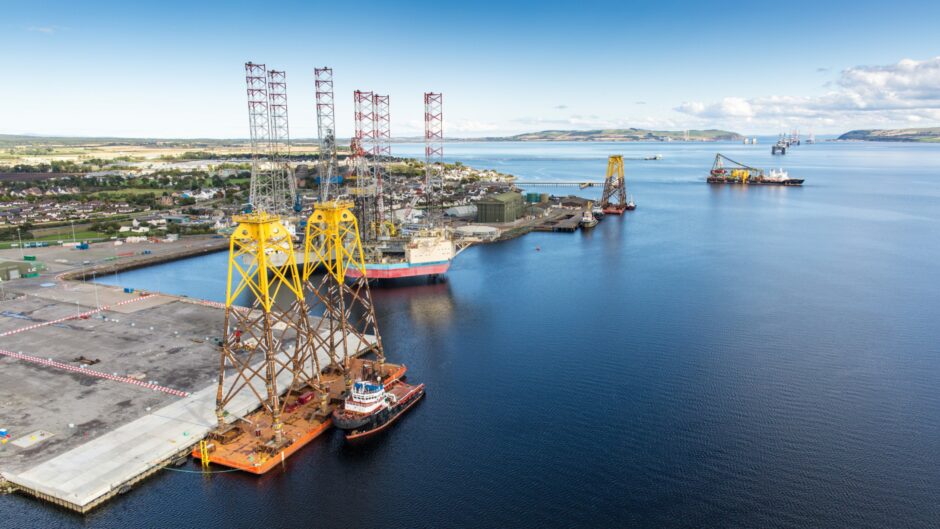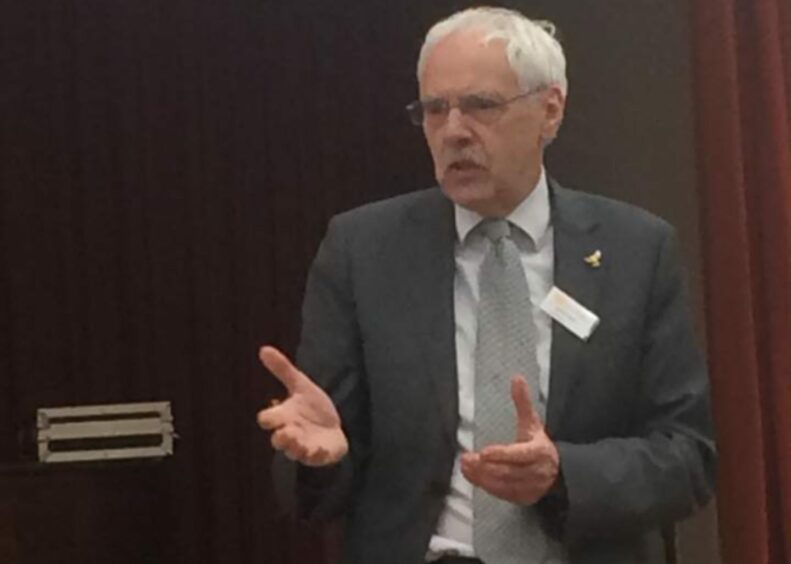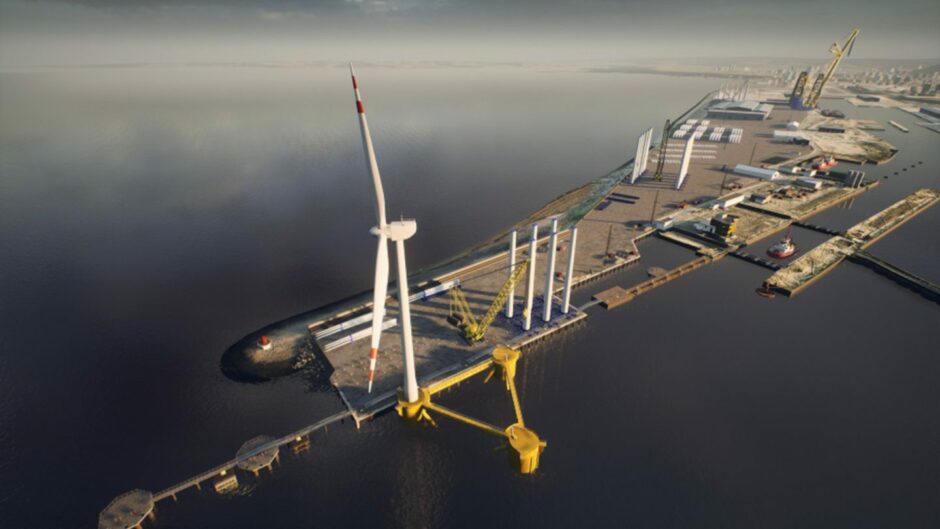
Long-serving Liverpool councillor Richard Kemp remembers the promises of jobs and investment the first time “freeports” were set up by Margaret Thatcher in his city.
Now, more than 10 years after the special tax zones were scrapped by David Cameron, the policy has been revamped and rebranded, with two coming to Scotland at Cromarty and along the Firth of Forth.
Discussions about the failures of the past freeports appear to have been drowned out by promises about the new plans, first announced by Boris Johnson.
Drawing on past mistakes, Mr Kemp warns:
- Freeports didn’t create new jobs, they just moved them around.
- The new plans are “better” but could still fall short of jobs promises.
- Greens might be right about workers rights being “eroded”.
The revised strategy is a key plank of the UK Government’s so-called levelling up agenda, and is being delivered jointly with the Scottish Government.
It revives an idea first put into practice under Mrs Thatcher’s government from 1984 when seven sites were designated as freeports in England.
They were eventually retired by Mr Cameron in 2012.
Liverpool freeport
Mr Kemp, a former regeneration adviser, still does not believe freeports will work, arguing the city’s past experience with the special tax zones failed to deliver.
He was a councillor from 1975 until 1984, and then again from 1992 until the present day.
Looking with the benefit of hindsight, he says: “There’s nothing new about a freeport.
“Freeports didn’t create new jobs, they moved jobs around.
“Most of the people that moved into both the freeports and enterprise zones, the companies moved locally. The job increase was minimal.
“There was a general agreement they were tired and hadn’t worked.”
Now, the UK Government says tax incentives have been designed to encourage new investment to create businesses and economic activity, not displacement.
What are freeports?
Freeports aim to create economic activity, including trade, investment and jobs, near shipping ports or airports.
Supporters of the scheme argue their effectiveness was previously limited by EU state aid rules.
A report by the Institute for Fiscal Studies (IFS) argued pre-2012 freeports were “rather limited affairs”.
These focused on customs measures like duty and VAT suspension that were “little different from what was available elsewhere in the country via other schemes”.
The IFS say the new freeports are “more substantive” and will include a range of tax reliefs, enhanced support for trade promotion and innovation and seed capital to help pay for infrastructure.
In January, the Press & Journal revealed Cromarty Firth would be one of the two sites to gain special freeport status, with a joint bid from Aberdeen and Peterhead losing out.
In the case of the Highlands, there are plans to make the area a major global hub for green energy, maximising on the opportunity offered by offshore wind.
Along with the Forth freeport, both sites are expected to deliver 75,000 jobs.
A UK Government spokeswoman said: “We have developed an ambitious new freeport model that has a simplified customs process, tax measures to incentivise private business investment, locally led planning facilitations, and targeted funding for infrastructure improvements in freeport areas.
“Freeports uphold the UK’s high standards on workers’ rights. They are subject to the same legislation and regulations to protect these as the rest of the country.”
This time it’s ‘different’
Mr Kemp believes that while freeports will not ultimately be successful, there is a “better chance of success”.
He points to the larger size of the freeport areas which means there is “possibly less likelihood of people moving half a mile to take advantage of something”.
He also concedes the key players are involved “much more satisfactorily” this time round, including the public and private sector.
But he also sympathises with the views of the Scottish Greens, agreeing freeports “go for minimum wage jobs” and that it is “very difficult to enforce employment standards”.
In January, the new Liverpool City Region Freeport officially opened for business with estimates it could create more than 14,000 new highly skilled jobs and deliver £800 million of investment.
A spokesman for the Liverpool City Region described it as an “entirely new entity” unlike the freeport that existed in the region pre-2012.
He added: “There are strict rules, including clear monitoring and evaluation criteria in place to prevent displacement. The freeport incentives and benefits are only available to businesses who meet this criteria.”
Malcolm MacLeod, Highland Council’s nominated director on the green freeport board for Cromarty, described the scheme as a “new generation of green freeports”.
He said workers’ rights are a “fundamental” element of the Cromarty Firth plans.
Mr MacLeod added: “The Inverness and Cromarty Firth areas are recognised as the key location in Scotland for the projected growth of offshore renewables and an area with potential benefits for regeneration, diversification of jobs and skills and the retention of young people in the area.”
‘High quality, well-paid jobs’
A Scottish Government spokesman said green freeports will create “high-quality, well-paid new jobs”, promote growth and regeneration, and help Scotland achieve its net zero ambitions.
He added: “We want the green freeport model to be an exemplar in the drive to create high value jobs, and a rigorous selection process made fair work practices, including payment of the Real Living Wage, an important aspect of this.
“By targeting specific sectors and types of business, we are confident that, in addition to delivering significant numbers of new, good, green jobs, the green freeports will be able to manage and mitigate the risk of job displacement from elsewhere – and we have asked them to set out how they will do so.
“We will monitor developments closely once the green freeports are operational.”
Recommended for you

 © Supplied by Liverpool Liberal De
© Supplied by Liverpool Liberal De © Supplied by Forth Ports
© Supplied by Forth Ports